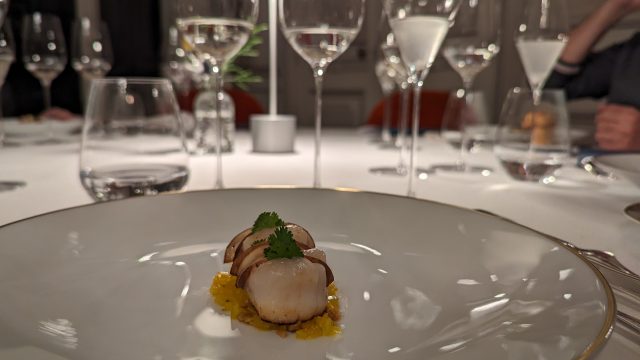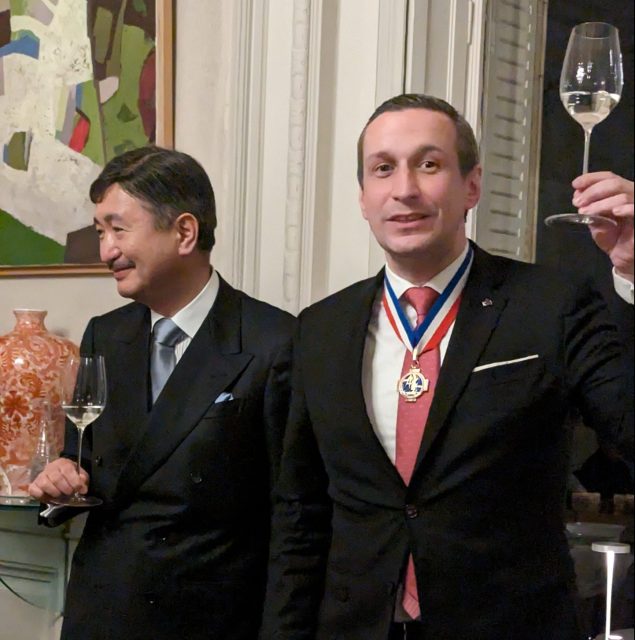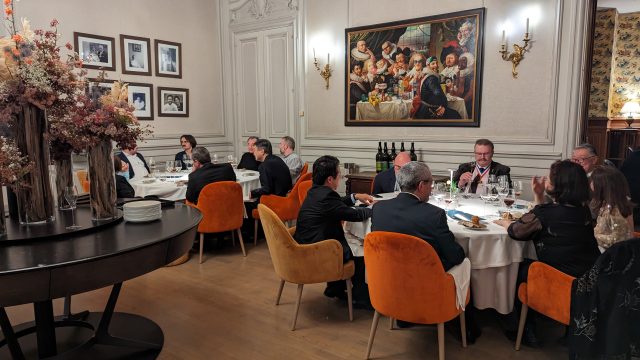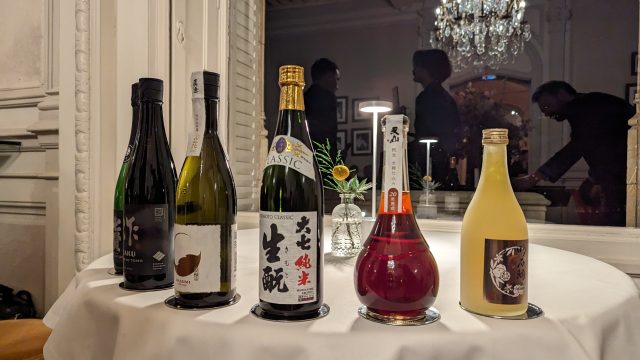This website uses cookies so that we can provide you with the best user experience possible. Cookie information is stored in your browser and performs functions such as recognising you when you return to our website and helping our team to understand which sections of the website you find most interesting and useful.
Prestigious event brings together sake makers and top sommeliers
The Japan Sake and Shochu Makers Association held a luxury dinner, in which sommeliers paired fine sake with Michelin-starred French cuisine.

Japanese and French experts joined forces in Lyon in February, as the Japan Sake and Shochu Makers Association (JSS) organised its latest international event. In an exceptional cross-cultural exchange, six sake breweries presented their products alongside six of France’s best sommeliers. Each duo presented one sake to match each course at Restaurant Saisons, the Michelin-starred restaurant at Institute Lyfe (formerly Institute Paul Bocuse).
The sake breweries showcased a range of Japanese production. In part this was geographic: the breweries spanned from the southerly island of Kyushu to Fukushima Prefecture, three hours north of Tokyo. There was also considerable stylistic variation. Traditional Junmai and Junmai Daiginjo sakes were on show, as well as sparkling sake, yuzushu and 20 year aged sake. The six breweries represented some of the most respected in the country.
The sommeliers, likewise, had reputations preceding them. Seven of those in attendance, including all six who were presenting, had been garlanded as Meilleurs Ouvriers de France (MOF), the rare honour bestowed upon France’s finest craftsmen. Since the category’s establishment in 2000, just 27 sommeliers have achieved the title, judged through a brutal multi-stage exam process. Indeed, the six experts were proudly wearing their MOF medals as they presented.

Xavier Thuizat, one of the MOF sommeliers attending, stressed the importance of spreading sake knowledge. “We need to open minds and open the possibilities of pairing with French cuisine,” he proposed. Citing challenges in addressing greenness, bitterness and acidity in food, Thuizat suggested, “where the wine can’t make a pairing, Japanese sake can do it.”
The dinner was specifically designed to demonstrate those possibilities. It also served as a headline event to increase sake’s standing in Europe. By treating it with the same reverence usually offered to wine, the JSS sought to demonstrate sake’s quality to the European market.
Its event therefore made the most of France’s culinary heritage. Lyon, long associated with famed chefs such as Eugénie Brazier and Paul Bocuse, has a reputation as a culinary hotspot. Indeed, it was termed the “world capital of gastronomy” by critic Curnonsky as early as 1935. The city itself lends weight to any pairing event.
As an additional mark of prestige, the dinner took place at Restaurant Saisons. The renowned establishment is attached the to Institut Lyfe (formerly the Institut Paul Bocuse) and is France’s first Michelin-starred training restaurant. It provided refined gastronomy with a white-glove service to match the fine sakes.

More than an exercise in marketing, however, the event proved sake’s versatility in food pairing. The JSS has placed a particular focus on highlighting sake’s pairing potential in its international events. The sommeliers, each of whom introduced a different sake, focused on its elegance in accompanying food. Sake makers attach particular importance to the water used in production, as it comprises around 80% of the finished product. The very best use a local source, with Japan’s frequently soft waters providing a sensation of purity and a generous mouthfeel.
The presenting sommeliers also highlighted its suitability for ‘wine-killing’ ingredients. As a less intense beverage than wine, it is less likely to clash with ingredients, instead gently layering around them. It also contains naturally high levels of amino acids, which allow sake to combine well with savoury flavours such as eggs or fish.
Across the meal, its versatility was on show. A fresh Junmai Daiginjo with salty notes, for instance, was matched to scallops with mushroom and orange. The aged Junmai, on the other hand, accompanied rich veal sweetbread with cabbage and a chilli jam. Even the dessert had a pairing: sake-based yuzushu liqueur complemented the bold citrus jelly beneath a slice of ‘couronne’ cake.
For Thuizat, it represented a blending of two cultures that love each other and approach the collaboration. “We need the purity of Japan and the strong knowledge of hospitality,” he commented at the dinner. “This can inspire us. However, the French can inspire Japanese people with their sentiments and their smiles. Both are very essential.”

Related news
Suntory expands water education provision target for 2030

